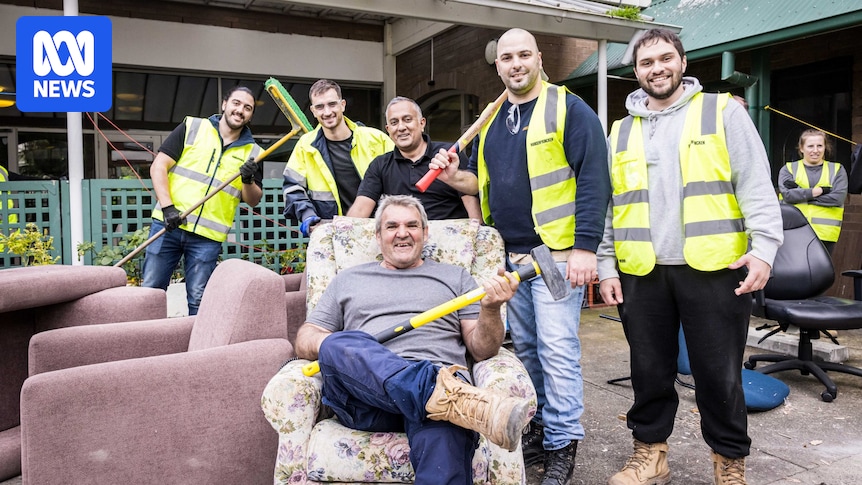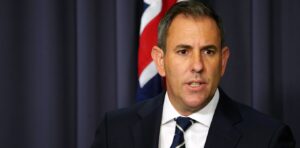
On any given night, approximately 122,000 Australians find themselves without a home, resorting to sleeping rough outdoors, in their cars, or couch surfing. Meanwhile, an array of dormant and vacant public and commercial buildings remain unused across the nation. This stark contrast is not lost on Robert Pradolin, the founder and executive director of Housing All Australians (HAA), a not-for-profit organization dedicated to addressing homelessness.
“Like most Australians, I assumed that our governments were looking after our vulnerable people and I discovered that they weren’t,” Pradolin explained. “The more I learnt about it, the more I was scared for our future because we’re allowing homelessness to be normalised.”
Pradolin, a former civil engineer, has spent the past decade rallying “compassionate capitalists” from the private sector to donate skills, labor, and building supplies to transform vacant buildings into housing solutions. This initiative, HAA, collaborates with the private sector to repurpose these structures into temporary or long-term housing for those at risk of homelessness.
Transforming Vacant Buildings into Housing
In 2016, HAA launched its first project in South Melbourne with the help of Metricon and its subcontractors, refurbishing 32 rooms in a 52-room facility. Over four years, the YWCA assisted over 140 women in stabilizing their lives without any government expense.
“Since then, HAA has gifted 100,000 nights of free accommodation to not-for-profit crisis accommodation providers by repurposing nine buildings across Australia, including a dormant convent, an aged care facility, hotel, and rooming house.”
Pradolin advocates for collaboration between the public, private, and community sectors to tackle issues such as zoning, permits, compliance, and land tax. One of HAA’s projects, Bridget House in bayside Victoria, exemplifies the potential of repurposed vacant buildings.
Addressing Homelessness in Gippsland
Recently, Pradolin traveled to Victoria’s Gippsland region for a forum addressing the rising homelessness levels. Of the 64,117 households on Victoria’s social housing waiting list, 7,520 are in Gippsland. According to Mitchell Burney, Quantum Support Services general manager and Gippsland Homelessness Network chair, the pandemic has exacerbated an already critical homelessness situation in the region.
Burney highlighted the lack of emergency accommodation and outreach workers, noting that 3,644 households are accessing homelessness services in Gippsland for 2024–25. However, he believes the actual number of homeless individuals is likely double, as many do not access services or are unaware of them.
“There has been a 32 per cent increase in rough sleeping from 2023–24 across Gippsland, with 572 known rough sleepers living outdoors, in tents, under bridges, or in their cars.”
Burney emphasized the urgent need for repurposing dormant buildings as pop-up housing across regional Victoria, with a six-month wait for homelessness case management support in the Latrobe Valley.
The Role of the Private Sector
Sale-based real estate agent Lisa Wegener noted a 50 per cent increase in median rents over the last five years, often referring clients to support services for bond, relocation, and rental payments. Wegener called for investor incentives to encourage affordable one-bedroom rentals for single individuals on Centrelink incomes.
She pointed out that compliance legislation and land tax have driven small property investors out of the market, leading to a 10 per cent reduction in her rental roll. “There’s just a lot more costs involved,” she said, citing rising costs for gas and electrical compliance checks, insurance, and other expenses.
Sale has been earmarked for a new HAA project, with a call to tradespeople, businesses, local councillors, and commercial property owners to explore transforming one of the shire’s vacant buildings into a pop-up shelter.
Long-Term Implications and Solutions
Pradolin warned of a “lose-lose” scenario for the private sector if affordable housing supply is not urgently addressed. He emphasized the importance of viewing homelessness through an economic lens, noting that new housing supply could alleviate pressure on housing prices and the tight rental market.
“It starts with the lack of housing for essential workers,” Pradolin stated. “You push people out of an area because there is not enough housing supply to put downward pressure on price.”
He questioned the sustainability of a system where workers live increasingly far from their workplaces, impacting productivity across Australia. Pradolin’s campaign seeks to educate the private sector on these socio-economic implications, advocating for a comprehensive approach to housing as a critical component of the nation’s economic ecosystem.







